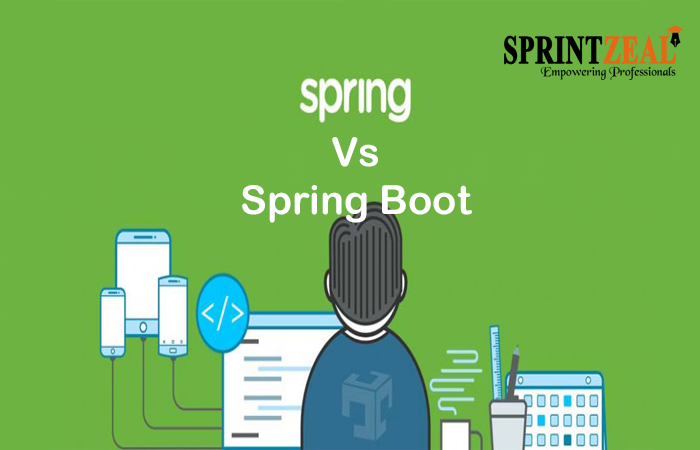Spring vs. Spring Boot
Want to learn more about Spring vs. Spring Boot in Java? Check out this post to learn more about the Spring framework and how it benefits Java developers.
Join the DZone community and get the full member experience.
Join For Free
Over the past few years, due to added functionalities, the Spring framework has become increasingly complex. It requires going through a lengthy procedure in order to start a new Spring project. To avoid starting from scratch and save time, Spring Boot has been introduced. This uses the Spring framework as a foundation.
In this blog, we are going to focus on the roles of Spring and Spring Boot in solving various problems and how they are different from one another. Let’s get started!
To understand the difference between Spring and the Spring Boot framework, let us consider an application that allows requests from the various browser. Below is the flow we want to consider:
Browser <> RESTful layer <> Middle layer <> Database
Spring Framework
Spring is one of the most widely used Java EE Frameworks for building applications. For the Java platform, the Spring framework provides an elaborate programming and configuration model. It aims to simplify the Java EE development and helps developers be more productive at work. It can be used at any kind of deployment platform. It takes into account the rising needs of today’s businesses and strives to fulfill them.
Unlike other frameworks, Spring focuses on several areas of an application and provides a wide range of features.
One of the major features of the Spring framework is the dependency injection. It helps make things simpler by allowing us to develop loosely coupled applications.
Spring Boot
While the Spring framework focuses on providing flexibility to you, Spring Boot aims to shorten the code length and provide you with the easiest way to develop a web application. With annotation configuration and default codes, Spring Boot shortens the time involved in developing an application. It helps create a stand-alone application with less or almost zero-configuration.
Autoconfiguration is a special feature in Spring Boot. It automatically configures a class based on that requirement. Let us take a quick look at some of the features and benefits of these frameworks:
Benefits of the Spring Framework
• The Spring framework can be used for all layers of implementation in the development of an application.
• Considering its POJO model, it is a very lightweight framework.
• It allows loose coupling and easy testability.
• It supports declarative programming.
• It is capable of eliminating the formation of singleton and factory classes.
• It supports both XML and annotation configurations.
• It provides middleware services.
Despite having several benefits in the Spring framework, what led to the emergence of Spring Boot?
Spring Boot helps in the easy usage of the Spring Framework by simplifying it to a great extent. Spring provides a loosely coupled application — this is a great feature. However, when there are several loosely coupled blocks, keeping track of them becomes a tedious and messy task. This is where Spring Block comes into the picture and helps simplify things by offering no configuration feature. It helps you get started with minimal effort and even provides externalized configuration.
Benefits of Spring Boot
• Spring Boot doesn’t require you to deploy WAR files.
• It creates stand-alone applications.
• It helps embed Tomcat, Jetty, or Undertow directly.
• It doesn’t require XML configuration.
• It aims to reduce the LOC.
• It offers production ready features.
• It is easier to launch.
• Easier customization and management.
Therefore, Spring Boot is a Spring-based production-ready project initializer. With features like auto-configuration, it saves you from writing lengthy code and helps you avoid unnecessary configuration.
While the Spring Framework offers you features like dependency injection or IOC and handles transactions, it also acts as a foundation for other Spring frameworks. The best example for this is Spring boot. Spring Boot uses the Spring Framework as a foundation and improvises on it. It simplifies Spring dependencies and runs applications straight from a command line. It also doesn’t require an application container. Spring Boot mostly helps in monitoring several components and configures them externally.
All in all, the Spring framework has made a significant contribution and continues to do so. With the many features mentioned above, the Spring framework is always a great choice for developers. However, it is highly beneficial when used alongside Spring Boot. The added advantages that come with Spring Boot are of great value to the developers as they offer completion of projects with minimal efforts. To all the problems that arise from the Spring framework, Spring Boot is the solution.
Opinions expressed by DZone contributors are their own.

Comments